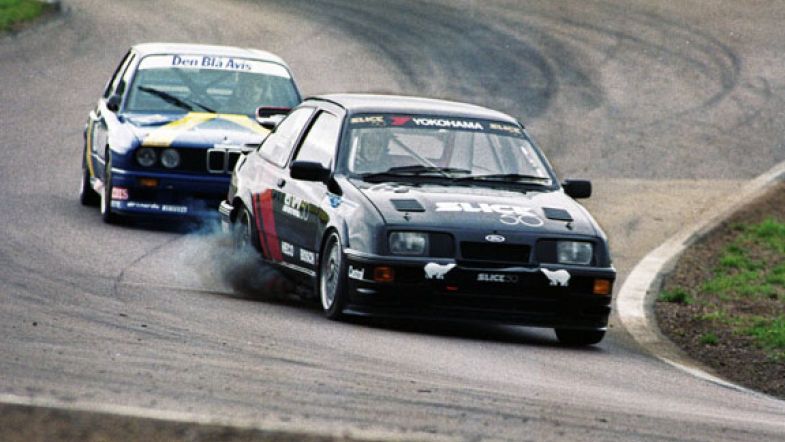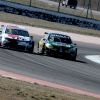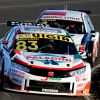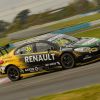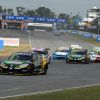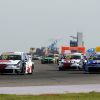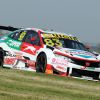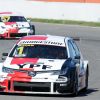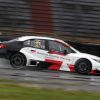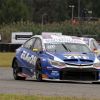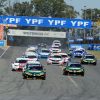Road Cars of Touring Car Racing: Ford Sierra
For the fifth in the series of “The Road Cars of Touring Car Racing” we turn to Ford, and, like the previously featured BMW 320si, a homologation special, the evocative Ford Sierra RS500 Cosworth. One of the most famous and instantly recognisable touring cars ever, the RS500 came to dominate Group A in the late 1980s, taking wins and breaking records across the globe.
But what about the car the all-conquering Ford was based upon? A combination of the expertise and tuning might of the Cosworth and Tickford, the RS500 went on to become an icon for a generation of touring car fans, far removed from its early reputation as a sensible family Sierra.
The Ford Sierra was a large family car released in 1982 to replace the Ford Cortina and Taunus, and although sales never quite matched that of its predecessors, performance in the showrooms and forecourts of Europe was still strong.
A high performance version, the XR4i, was introduced in 1983, using the same 2.8-litre Cologne engine as the Capri, which in the hands of Andy Rouse went on to take the 1985 British Touring Car Championship.
Ford Sierra RS Cosworth
A year on, and the Sierra RS Cosworth was born, bearing the famous RS – Rallye Sport – designation thanks, in part, to discussions between Ford Great Britain’s director of motorsport Stuart Turner and Cosworth’s Keith Duckworth, who both desired to beat the Group A Rover Vitesses in touring cars.
Designed by Ford’s Special Vehicle Engineering group and produced in the company’s Belgian factory in Genk, just over 5,500 of the models were produced in order to meet the 5000 mark required for homologation for rallying, the other target area at the time of Ford Motorsport.
Available in just three colours and with minimal options to save costs, the ‘Cossie’ contained many features developed on the race going XR4i and the input of Rouse, plus of course Cosworth’s turbocharged 2-litre version of the Ford Pinto engine under the bonnet, which kicked out 204 BHP (double that was attainable in racing guise) giving the road going model a top speed of 145mph.
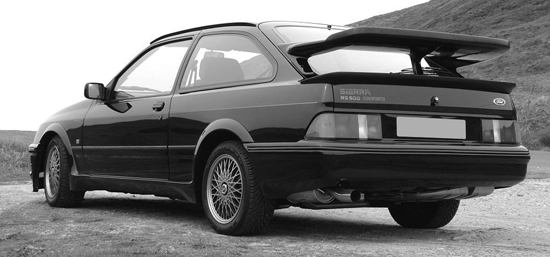
In fact such were the improvements to the Sierra, an alternative gearbox had to be brought in, with the 5-speed Borg Warner T5 replacing the original Ford Type 9 ‘box, which was now considered inadequate.
Using the Sierra’s lighter three door bodyshell to which a range of spoilers, wings and flared wheel arches were added, made the car look like nothing else on the road, and a design which can still be considered a classic today.
On the track the Sierra RS Cosworth was bigger, faster and handled better than it’s predecessor and returned the Blue Oval to the winner’s circle in touring car racing.
This had undoubtedly been a part of the aim
The ultimate evolution
In 1987 Ford was ready to give the Sierra range a facelift, which now included the Sapphire, a four door model of the Sierra. The new Sierra Cosworth would thus have to be based on this, rather then the three door XR4i, but to send the car off in to retirement, Ford gave the ‘Cossie’ one final fling.
A limited run of 500 cars (hence the RS500 tag, not because the car produced 500bhp as some stories state) were taken from the Belgian production line and sent to Aston Martin Tickford, at Bedworth near Coventry.
Here these examples, incidentally all right hand drive, were breathed upon with an up rated turbocharger and intercooler, a doubling in size of the fuel injector system and recalibrated electronics and suspension, not to mention the exterior changes which saw the adoption of the ‘whale tail’ rear wing, an extended front bumper and a protrusion of extra wings, flaps and vents throughout the car.
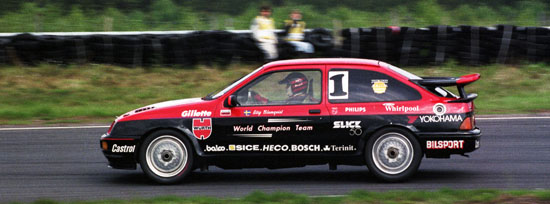
Tickford’s work added an extra 20bhp to the car, boosting the top speed above 150mph and increasing the price tag to the £20,000 mark – £4,000 more than the standard Cosworth. Now, a good example of the RS500 will set you back over £25,000, illustrating the classic status of the car.
Of the 500 cars built, 392 were available in factory black, 52 in Diamond White and 52 in Moonstone Blue, with a further four prototypes in white.
Despite all the modifications to the RS500, the car was actually considered mildly inferior to the Sierra RS Cosworth at low speeds, a car that was more suited to every day life. However with a turbocharger that didn’t kick in until the 3000rpm mark, the new machine was far more suited to life at the track.
The RS500 on track
On circuits the RS500 annihilated it’s Group A opposition, scoring a one-two for Eggenberger Motorsport first time out in the World Touring Car Championship at Brno in August 1987, the same day that Graham Goode took the cars first Class A win in the BTCC at Donington Park. Further wins at Calder, Wellington and Fuji followed as Ford sealed the team’s prize, a feat they repeated a year later in the now European Touring Car Championship.
Drivers like Steve Soper, Klaus Ludwig, Armin Hahne, Klaus Niedzwiedz and Alain Ferte read like a who’s who of touring car racing, showing the strength Ford had on the driving front in the pan-national competitions.
With teams able to tune to the road going 224bhp to well in excess of 500bhp, the RS500s dominated domestic championships such as the BTCC (in the hands of Rouse, Tim Harvey, Rob Gravett to name but three), by simply outgunning the rival BMW M3s with a horsepower advantage.
Demise of the RS500
As with many touring car series, disputes over the rules brought about by the dominance of the cars, eventually caused the downfall of the track going RS500.
In Germany the Sierra’s were first handicapped with restrictions before the teams pulled out altogether in 1990 as their cars were outlawed, while in the BTCC the RS500s raced on into 1991, by which time they had to run in a secondary class and were no longer competitive thanks to a restricted turbo boost.
Around the world though, wherever there was a touring car championship, RS500s had run and won in a variety of spectacular and iconic liveries, with almost every top line touring car driver of the time at one point sampling the car.
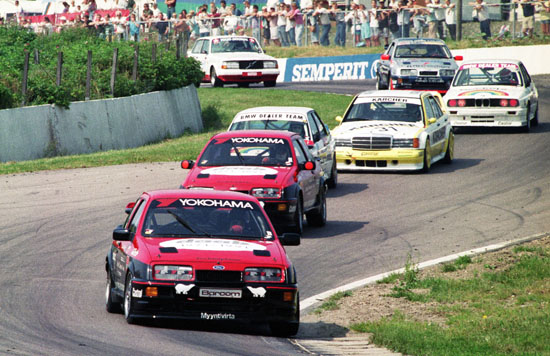
A further facelift to the road going Sierra came in 1990, while more minor revisions came to the range in 1992, a year which saw the unveiling of the Sierra’s successor, the Ford Mondeo, itself a formidable touring car racer.
Ironically the majority of the Group A RS500s weren’t really RS500s at all, as most were purpose built racing cars with special shells featuring integrated roll cages. But for the man on the street, owning a RS500 was, and possibly still is, as close to being Andy Rouse or Klaus Ludwig without owning a racing licence as it is possible to get. And for many others, it remains possibly the definitive road going touring car.
